
The University of Phoenix is paying a record $191 million to settle a complaint filed by the Federal Trade Commission accusing the for-profit university of using deceptive ads to lure students with the promise of future job opportunities with large companies such as AT&T, Adobe, Twitter, Microsoft and Yahoo. The settlement includes a plan to cancel $141 million in student debts that are owed to the school by people who enrolled from October 2012 through the end of 2016 – the period in which the FTC says prospective students might have been duped. The remaining $50 million in the settlement will be paid in cash, which the FTC says “will be used for consumer redress.”
Court documents show the settlement gives the University of Phoenix and its parent company, Apollo Education Group, 15 business days to send an email and letter to eligible students, informing them that they’re covered by the agreement. The letters inform eligible former students that they no longer owe any money to University of Phoenix and their account balance will be cleared within 45 business days. The letter also states that the school has 55 business days to tell credit reporting agencies to delete the debt from students’ credit reports.
The FTC says the university wrongly suggested that it worked closely with high-profile companies to develop its courses and the school’s “Let’s Get to Work” ad campaign was one example of how it hyped connections with potential employers that did not exist. The University of Phoenix successfully targeted minorities, military veterans, service members and their spouses for enrollment, the FTC says, calling the University of Phoenix “the largest recipient of Post-9/11 GI Bill benefits since the program’s inception.” As part of the deal, the university did not admit or deny any wrongdoing alleged in the federal complaint.
Andrew Smith, director of the FTC’s Bureau of Consumer Protection said in a statement that it’s the largest settlement the FTC has obtained against a for-profit school. Smith added, “Students making important decisions about their education need the facts, not fantasy job opportunities that do not exist.” In response to the FTC settlement, the University of Phoenix issued a fact sheet touting both its achievements and its commitments to improve. In it, the school says it devoted 17% of its total spending in the 2018 fiscal year to marketing costs. The fact sheet concludes with a section titled “We Are Committed To Responsible Marketing.”
The settlement affects students who were enrolled between October 2012 and December 2016 but does not apply to those who owe money from federal and private loans. William Hubbard, a spokesman for Student Veterans of America, said the case “heavily underscores that questionable practices to aggressively recruit students are not acceptable,” but added the debt covered represented “a small piece of the pie.” “Ultimately private loans, those don’t fall under the debt cancellation rules,” he said. “If you’re a student that is paying for costs out of pocket, presumably through a private loan, you’re still on the hook for that.”
The FTC said in its statement that those who believe they have been defrauded can apply for loan forgiveness using the borrower defense to repayment procedures, and borrowers looking to lower monthly payments on their federal loans could obtain information from the Department of Education about income-driven repayment plans.
Read more
Uber says it received 5,981 reports of sexual assault in 2017 and 2018. Among those, there were 464 reports of rape. The report also noted there were 19 deaths caused by physical assault during 2017 and 2018. The report showed that about 92% of the victims of rape were riders and about 7% of the victims were drivers. Women and female-identifying individuals made up 89% of the victims with men and male-identifying individuals comprising about 8% of victims. Less than 1% of victims identified as gender minorities. The other four categories of sexual assault defined by Uber — including non-consensual kissing, non-consensual touching and attempted rape — did not detail whether the reporting parties were victims. Lyft said it would release its own safety report but it has not indicated when.
Uber also released “early estimates” for the first six months of 2019. It estimated that one out of every 6 million trips may result in an incident report concerning non-consensual sexual penetration, and one in every 900,000 trips may result in an incident report concerning non-consensual touching of a sexual body part. Based on these estimates, and Uber’s own estimate that it has 45 rides every second in the US alone, there were more than 100 reports of rape, and nearly 800 reports of non-consensual touching of a sexual body part, in the first half of 2019. The first half numbers are subject to change, due to factors such as auditing and late reporting.
The ride hailing app has repeatedly been criticized for not taking passenger safety seriously, and for ignoring reports of rape and sexual assault by its drivers. The company incidents of sexual assault are rare, as the company averages more than 3 million trips each day. The report only covers Uber’s U.S. operations. Critics say Uber should be doing more, particularly with background checks, to weed out potentially dangerous drivers. Unlike many taxi companies, Uber and its main U.S. rival, Lyft, do not check drivers’ fingerprints against a national database. Uber says the FBI has acknowledged its database is incomplete and does not always include a final disposition. The company’s process includes a motor vehicle screening, a criminal background check and ongoing notifications about any new offenses. An added fingerprint check, which can’t be faked, could add precious time to the driver-approval process.
A U.S. House committee is looking at legislation that could reduce the number of sex assaults involving ride-hailing passengers and drivers by requiring fingerprint background checks, camera monitoring and front license plates for ride-hailing cars in states that don’t have them. This would help prevent fake ride-hailing drivers from picking up passengers by making it easier for passengers to check plate numbers against the ones provided by Uber and Lyft. There could be limits on what federal legislators can do because ride-hailing companies conduct interstate commerce, but that is new legal territory.
Uber has been making efforts to improve safety over the last two years, including an in-app emergency button, a ride-check feature that detects unexpected stops or crashes and the ability for riders or drivers to share their location with loved ones during a ride. The company outlined additional safety steps it will take in the report. Both Uber and Lyft are promising more safety initiatives to try to prevent sexual assault during ride-sharing trips by better educating drivers. In 2020, Uber plans to expand sexual misconduct and assault education for all U.S. drivers and is working with the Rape, Abuse & Incest National Network or RAINN, the nation’s largest sexual violence organization, to design the program. Uber wants to share the names of drivers who have been banned from the platform with other ride-sharing companies. Lyft also is working with RAINN on a safety education program, which drivers are required to complete, according to Lyft’s web site. In October, Lyft teamed up with security company ADT to develop new safety features in nine markets for early 2020. Both companies offer in-app access to 911.
Read more
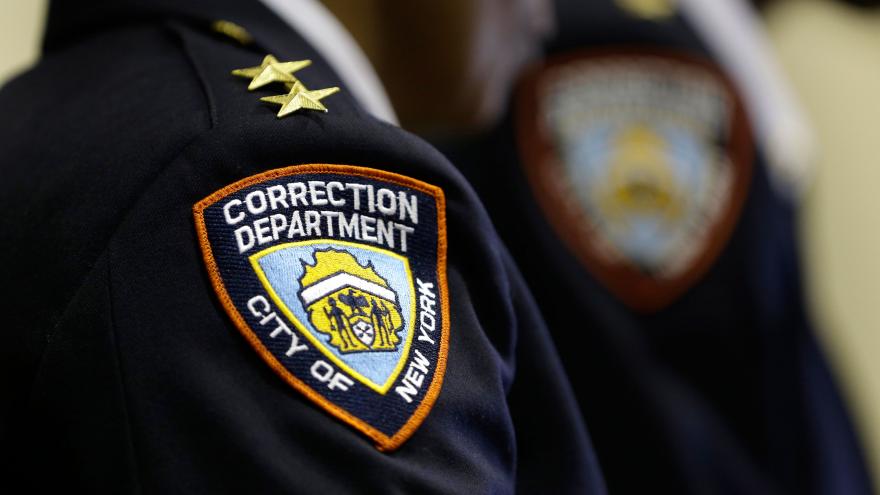
Four Rikers Island correctional officers were suspended for allegedly waiting several minutes to rescue an inmate who had tried to hang himself in a cell, authorities and law-enforcement sources said. Surveillance The video showed the officers stood by for seven minutes while a teenager attempted to hang himself. Video shows one officer even walked up to the holding pen where the teenager was hanging, opened the door, then closed the door and walked away without intervening. The city’s Department of Investigation opened an inquiry into the incident.
The guards — three correction officers and one captain — are accused of inaction during the near-fatal incident when Nicholas Feliciano, 18, allegedly attempted to hang himself at the George R. Vierno Center at about 12 a.m. on Nov. 28. The captain had witnessed the incident on surveillance footage and went to the inmate to cut him down, sources said. Feliciano was rushed to a nearby hospital in critical condition with no brain activity and remains in a medically induced coma. The 18-year-old had been jailed in Rikers since November 19th when he was arrested on a parole violation. Feliciano had been in an altercation at the jail earlier in the day of suicide attempt and had been moved from general population into a holding cell by himself.
Video footage of the suicide attempt described to the Times shows him wrap one end of a piece of clothing around his neck and another to a pipe on the ceiling of the cell. He then stepped off a wall that separates the toilet from the rest of the cell and hangs from his neck. At one point during the attempt, Feliciano appeared to have second thoughts and struggled to get his feet back on the wall. He hung from the pipe for about seven minutes before he was rescued. The area of the attempted suicide was in view of a guard desk where officers can monitor activity through video feeds. The actions of the officers were recorded by a separate camera.
Rikers Island has housed jail inmates since the 1930s and has long been known for brutality. The jail complex saw hundreds of stabbings every year during the 1980s and early 1990s. In 2014, an Associated Press investigation detailed dozens of inmate deaths including that of a homeless ex-Marine who essentially baked to death in a hot cell. In 2016, “60 Minutes” correspondent Bill Whitaker reported that a lack of adequate training and a rising mentally ill population have made an already bad situation in the jail worse. New York City lawmakers voted in October to close the Rikers Island jail complex, which has become synonymous with violence and neglect, and replace it with four smaller jails in separate boroughs by 2026. The plan has been met with pushback from communities where the new jails would be located.
Read more

In recent years, it’s become evident that oil giant Exxon was aware of the causes and consequences of climate change from at least the 1970s, but chose to deliberately mislead the public for decades. A newly resurfaced article now shows coal industry executives equally understood the science of catastrophic global warming as far back as 1966. According to a copy of the magazine Mining Congress Journal, leaders of the coal industry knew as early as the mid-1960s that burning fossil fuels causes climate change.
The head of a now defunct mining research company wrote that the combustion of fossil fuels was increasing carbon dioxide in the atmosphere, causing global temperature increases. The recently discovered article now provides evidence that both the coal and oil industries have known about catastrophic climate change for decades, yet worked to cover up the evidence in order to continue burning fossil fuels.
James Garvey, the then-president of Bituminous Coal Research Inc., which developed pollution control equipment, discussed the state of pollutants and their regulation in the coal industry at the time. While much of the paper is concerned with sulphur in coal, a small section early in the article is concerned with carbon dioxide (CO2) discharge. “There is evidence that the amount of carbon dioxide in the Earth’s atmosphere is increasing rapidly as a result of the combustion of fossil fuels,” Garvey writes.
“If the future rate of increase continues as it is at the present, it has been predicted that, because the CO2 envelope reduces radiation, the temperature of the Earth’s atmosphere will increase and that vast changes in the climates of the Earth will result. Such changes in temperature will cause melting of the polar icecaps, which, in turn, would result in the inundation of many coastal cities, including New York and London.”
Garvey’s article isn’t the only one acknowledging the dangers of coal-produced pollution in the August 1966 issue. In a discussion piece following Garvey’s paper, combustion engineer James Jones from Peabody Coal (now called Peabody Energy, the largest private coal company in the world), does not address the global warming issue, but admits that air pollution standards to protect health have a place, saying the “Situation is Urgent”.
Jones wrote “We are in favor of cleaning up our air. We are, in effect, ‘buying time’. But we must use that time productively to find answers to the many unsolved problems.” In the decades to come, Peabody would become a huge industrial player in organized climate change denial. At the end of his article, Jones wondered: “What can an individual with a personal stake in the future of the coal industry do?” Among the answers he offered, “Be a ‘one-man’ public relations emissary for the coal industry,” Jones explained to his industry colleagues. “Tell your neighbours, friends, and the general public how important coal is to their every-day existence. Also tell them about the all-out cooperative efforts of the coal industry to reduce air pollution.”
The concerted effort to discredit the scientific consensus over man-made global warming has been continuing for two decades in the United States and shows no sign of weakening. It is often described as an attempt on the part of corporate America, most notably the fossil fuel industries, to hinder governmental regulations on their activities.
Read more
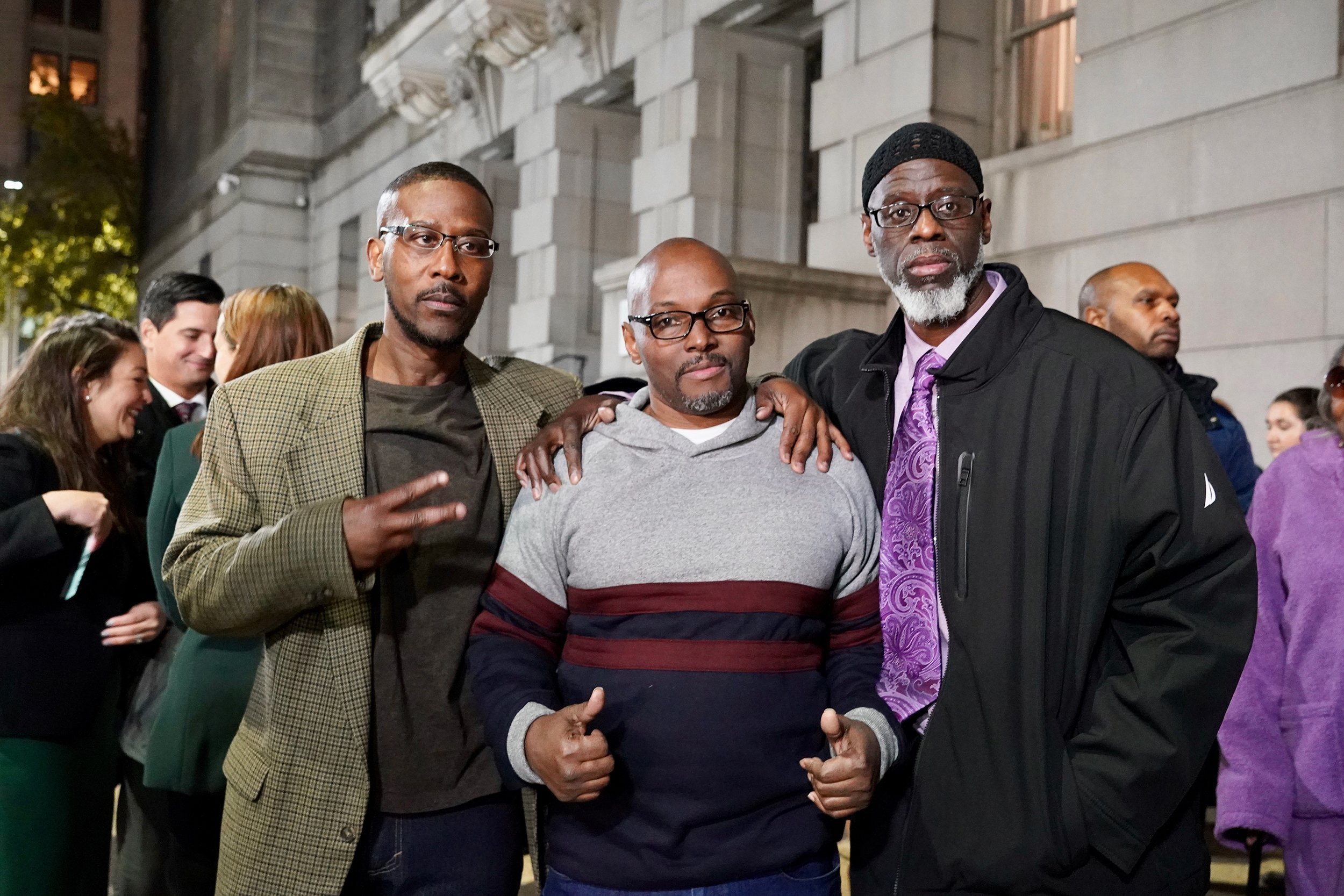
Three Baltimore men who spent 36 years in prison were released after authorities say they were falsely convicted of a 1983 murder. Alfred Chestnut, Ransom Watkins and Andrew Stewart were granted a writ of innocence after being convicted of first-degree murder of a middle school student, DeWitt Duckett. According to police, Duckett, 14, was shot and killed for his coveted Georgetown University basketball jacket in November 1983.
Chestnut has maintained his innocence since his arrest and the parole board denied his early release in part because he refused to admit responsibility for the shooting, the state’s attorney said. After he filed an information request this past spring, he discovered new evidence that was kept from his attorneys during trial. He reached out to Baltimore’s Conviction Integrity Unit, which was reviewing old convictions.
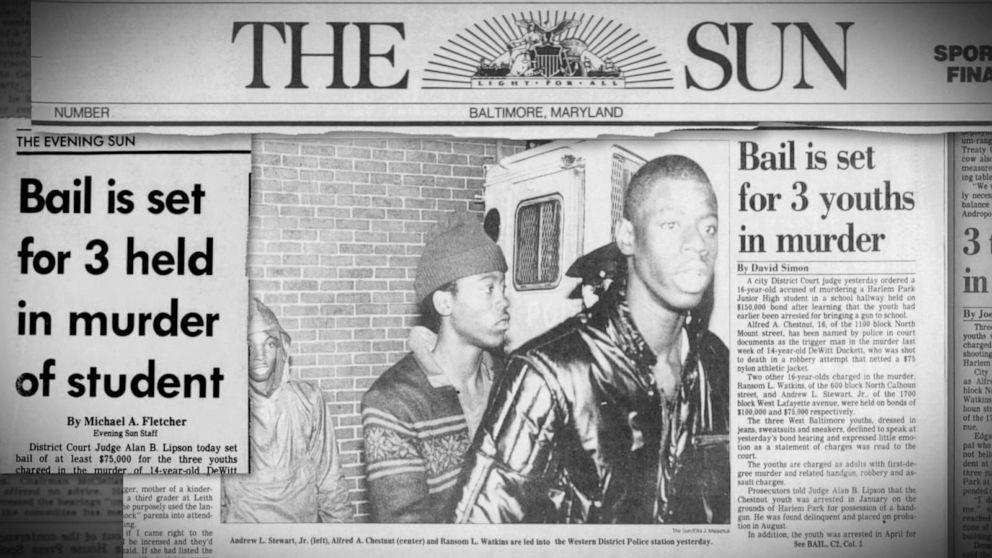
Chestnut and Watkins were 16 at the time of their arrest and Stewart was 17. The three teenagers had been skipping high school classes to visit former teachers at Harlem Park Junior High. Their teachers said they were being “silly,” but not threatening. School security escorted them off campus about half an hour before the murder occurred, according to a joint petition filed by the men and Baltimore City State’s Attorney Marilyn Mosby.
Watkins lawyer said the three teenagers were each arrested Thanksgiving morning, waking up with police with guns drawn on them. They were convicted based on witness testimony and what prosecutors at the time said was a crucial piece of evidence — a Georgetown jacket found in Chestnut’s bedroom. Chestnut’s jacket had no blood or gunshot residue and his mother was able to produce a receipt. A store clerk also testified that she had purchased it recently, the joint petition said.
Lawyers involved in the case said they were “horrified” to see the amount of exculpatory evidence that was hidden from the defense team and jury. Both the suspects and trial witnesses, all minors, were interrogated by police without their parents. Potential witnesses were interviewed in a group and told to “get their story together,” according to Chestnut’s lawyers. Anonymous calls identifying another shooter were kept from the defense, Mosby said. That teenager was seen after the shooting wearing what appeared to be Duckett’s jacket and confessing to the murder, she said. That suspect has since died and all trial witnesses have since recanted. “We have intentional concealment and misrepresentation of the exculpatory evidence, evidence that would have showed that it was someone else other than these defendants,” Mosby said.
Mosby apologized to the men “I don’t think that today is a victory, it’s a tragedy. And we need to own up to our responsibility for it,” Mosby said. “There’s no way we can repair the damage to these men, when 36 years of their life were stolen from them. You were all arrested on Thanksgiving 1983. Now you are free to spend the holidays with your loved ones for the first time in 36 years,” Mosby said in a press conference. The men are now in their early fifties preparing to enter adulthood on the outside for the first time and at least two have never driven a car before. Now, late in life, they will experience a world very different from the one they were barred from since their teens.
Read more
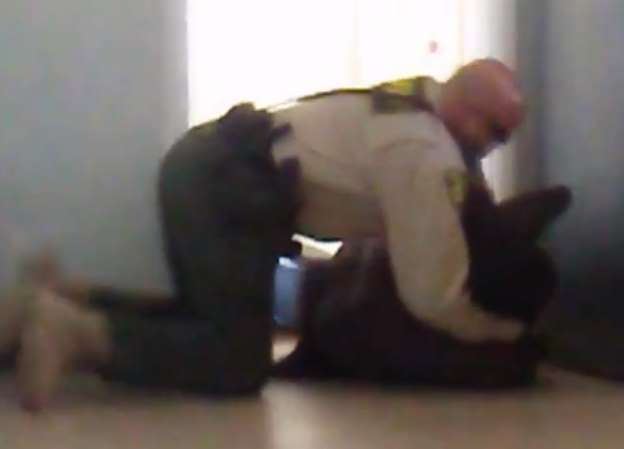
An Arizona sheriff’s deputy has been placed on administrative leave after disturbing cellphone video footage surfaced showing the deputy tackling and pinning a 15-year-old quadruple amputee to the ground. The incident sparked an internal affairs investigation by the Pima County Sheriff’s Department and a spokesman for the sheriff’s department said Deputy Manuel Van Santen was placed on leave pending the investigation.
The Sept. 26 incident started when the 15-year-old, who was in a group home after being abandoned by his family, allegedly knocked over a garbage can and verbally threatened a worker. Van Santen was called to the group home to restore order. In the video, Van Santen is seen holding the boy down for more than a minute as the teen struggles to break free. The deputy is shown in the video kneeling next to the amputee and putting the teen in a headlock. The teen can be heard becoming more upset, asking the deputy not to hold him down.
When Van Santen loosened his grip, the boy attempted to break free but did not get far before the deputy tackled him, wrapping his arms around the teen to subdue him. Eventually, the boy stops protesting and the officer lets him get up, asking him what his problem is, and why he kept moving when he was told not to move. As the 15-year-old insists he doesn’t have a problem and only threw a trash can, the deputy gets louder, bending over so that his face is inches away from the teenager’s as he yells and swears at him.
The teen recording says to the deputy, “Hey, you asked him a question, and he answered,” he tells the deputy. “Shut the hell up!” the deputy snaps back. He orders the teen out of the room and the boy responds that he can’t eat his cereal in his room. The deputy storms over, screaming at him to stay out of something that doesn’t involve him. “You shut the hell up!” he yells again. Both teens were arrested on disorderly conduct charges but Arizona prosecutors dropped disorderly conduct charges against the quadruple amputee.
Pima County public defender Joel Feinman said the incident likely would not have come to light if it had not been recorded by another teen living in the home since Van Santen was not wearing a body camera. It is not clear how long the incident lasted, as the 8 minute video began in the middle of the struggle. Feinman said the 16-year-old boy who recorded the incident had his head pushed into a wall by deputies during the incident. “These are kids who have already been traumatized in some way,” Feinman, whose office is representing both boys. “Men with badges should not be acting this way,” Feinman told the television station. “Men and women who do act this way should not have badges and guns.”
Feinman stated that given that Immanuel has no legs and is missing most of his arms — and wasn’t even wearing a shirt, making it unlikely that he could have somehow been hiding a concealed weapon –it is hard to fathom that he posed a threat to “this very large policeman with a badge and a gun.” Regardless of what the teenager said to the officer, he argues, the better response would have been to sit down and try to de-escalate the situation.

Read more

Two Manhattan federal jail guards accused of trying to cover up their failure to check on Jeffrey Epstein in the hours before his suicide are scheduled to go on trial April 20. Tova Noel and Michael Thomas were charged in U.S. District Court with conspiracy and falsifying official records. Prosecutors say they have hundreds of hours of video which shows the two guards were were sleeping, shopping online for furniture and catching up on sports news instead of checking on Epstein and other prisoners every 30 minutes.
Prosecutors said the guards appeared to have slept, surfed the internet, moved around a common area and sat at their desk instead of doing mandated inmate head counts and regular rounds in the special protective unit of the jail, where Epstein was being held awaiting trial. Prosecutors say some of the video does not show anyone approaching Epstein’s cell after he was last seen entering it on the night of Aug. 9. He was found unresponsive in the early morning hours of Aug. 10th.
The indictments against them say the two guards then falsified prison records to claim they had performed their required rounds. The guards have been charged with conspiracy to defraud the United States and with making false records. “We allege these officers falsified records to create the appearance they were following… protocols. The security risks created by this type of behaviour are immense,” FBI assistant director William Sweeney said in the statement.
US Attorney General William Barr ordered their suspension in August after the FBI opened an investigation. Federal prosecutors later offered the guards a plea bargain but they turned it down. “As a result of their false statements,” prosecutors say, “the MCC believed prisoners in the SHU were being regularly monitored when, in fact, as a result of the defendants’ conduct, no correctional officer conducted any count or round of the SHU from approximately 10:30 p.m. on August 9 until approximately 6:30 a.m. on August 10, at which time, Noel and Thomas discovered the body of MCC inmate Jeffrey Epstein, who had committed suicide overnight while unobserved.”
The Attorney’s Office says Noel, 31, and Thomas, 41, have each been charged with “one count of conspiring to defraud the United States by impairing, obstructing, and defeating the lawful functions of the MCC, and to make false records, which carries a maximum sentence of five years in prison. Noel is also charged with five counts of making false records, and Thomas is also charged with three counts of making false records, each of which carries a maximum sentence of five years in prison.
New York City’s medical examiner ruled that the convicted sex offender took his own life inside his Manhattan federal prison cell on Aug. 10, but a pioneering forensic pathologist told Fox News in late October that Epstein’s body bore telltale signs of homicide. Prosecutors wrote in the indictment that no one appeared to enter the area where Epstein was being held in the hours before he was found dead. “As reflected on video obtained from the MCC’S internal video surveillance system, at approximately 10:30 p.m. on August 9, 2019… Noel briefly walked up to, and then walked back from, the door to the tier in which Epstein was housed,” it said. “As confirmed by the video… this was the last time anyone, including any correctional officer, walked up to, let alone entered, the only entrance to the tier in which Epstein was housed until approximately 6:30 a.m. on August 10.”
Read more
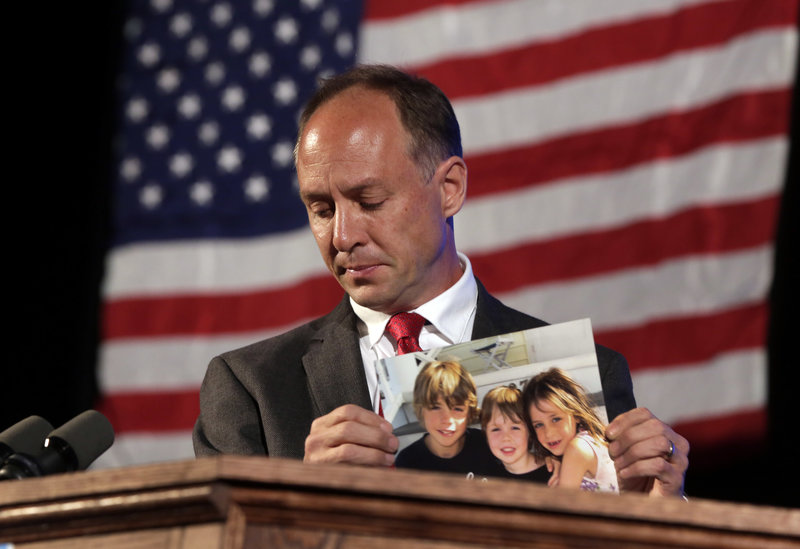
The Supreme Court declined to hear an appeal by gun manufacturer Remington Arms, that argued it should be shielded by a 2005 federal law preventing most lawsuits against firearms manufacturers when their products are used in crimes. The decision has cleared the way for survivors and the families of the 26 victims of the Sandy Hook Elementary School shooting to pursue their lawsuit against the maker of the rifle used to kill 26 people.
The families are arguing that Remington violated Connecticut law when it marketed the Bushmaster rifle for assaults against human beings. The Supreme Court’s decision not to take up the case allows the lawsuit filed in Connecticut state court by a survivor and relatives of nine victims who died at the Newtown, Connecticut, school on Dec. 14, 2012, to go forward. The lawsuit says the Madison, North Carolina-based company should never have sold a weapon as dangerous as the Bushmaster AR-15-style rifle to the public.
Gunman Adam Lanza used it to kill 20 children between the ages of 5 and 10 along with six educators, after killing his mother at the home they shared. The rifle used in the killings was legally owned by his mother. The lawsuit also alleges Remington targeted younger, at-risk males in marketing and product placement in violent video games. Lanza was 20 years old when he committed the mass shooting. Only two of the victims who were shot by Lanza—both teachers—survived the attack. Lanza killed himself as police arrived at the school.
The case is being watched by gun control advocates, gun rights supporters and gun manufacturers across the country, as it has the potential to provide a roadmap for victims of other mass shootings to circumvent the federal law and sue the makers of firearm. The National Rifle Association, 10 mainly Republican-led states and 22 Republicans in Congress were among those urging the court to jump into the case and end the lawsuit against Remington.
The Connecticut Supreme Court had earlier ruled 4-3 that the lawsuit could proceed for now, citing an exemption in the federal law. The decision overturned a ruling by a trial court judge who dismissed the lawsuit based on the 2005 federal law, named the Protection of Lawful Commerce in Arms Act.
The federal law has been criticized by gun control advocates as being too favorable to gun-makers. It has been cited by other courts that rejected lawsuits against gun-makers and dealers in other high-profile shooting attacks, including the 2012 Colorado movie theater shooting and the Washington, D.C., sniper shootings in 2002.
Read more
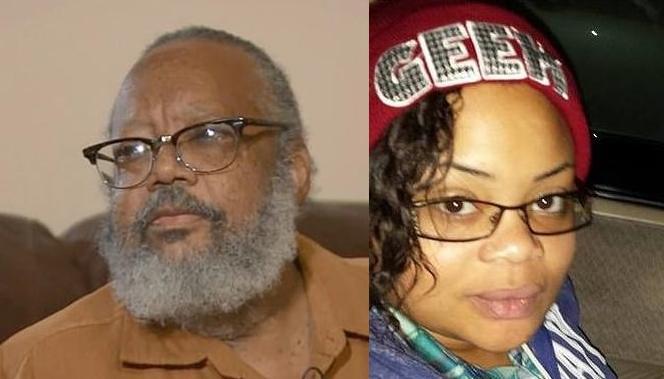
The father of Atatiana Jefferson has died, less than one month after a police officer killed his 28-year-old daughter by shooting through the bedroom window of her own home. Atatiana’s father, Marquis Jefferson, 59, died after suffering a heart attack. The family spokesman said, “I can only sum it up as a broken heart.” Atatiana was his only child and she was killed exactly one month ago, on October 12, by police officer Aaron Dean. The spokesman, Bruce Carter, said Jefferson had been under a lot of stress since his daughter was killed and was also battling Chronic Obstructive Pulmonary Disease, which makes breathing difficult.
Jefferson had been embroiled in a family dispute involving his daughter’s funeral and burial arrangements, which were controlled by her aunt, Bonita Body. He argued that as the surviving parent of Atatiana, he should have control of her burial, and was granted a temporary restraining order to postpone the funeral. The service eventually took place on October 24. “He was battling to be a part of her life to the end,” Bruce Carter, the family’s spokesperson, said. “I think it just got the best of him.”
Lee Merritt, attorney for Atatiana Jefferson’s family, said in a statement they were saddened to learn the news about Marquis Jefferson and “of course” the loss his daughter factored into his death. “Her death rocked the nation but no one felt it more than the people that were directly tied to her in life,” Merritt said. “Those people haven’t had a chance to grieve like normal families. They have been thrust into a very public, very emotional, very draining fight for justice.”
On October 12, at around 2:30 a.m., Dean had arrived at Atatiana’s Forth Worth residence with another officer in response to a non-emergency “wellness check” called in by a neighbor who noticed Atatiana had left her front door open. Atatiana was playing video games with her 8-year-old nephew when she heard noises outside of her home. According to her nephew, she took her handgun from her purse and pointed it “toward the window” just before getting shot by Dean. The two men did not identify themselves as police when they approached the window where Atatiana stood.
Body camera footage showed Dean looked inside a window using a flashlight, spotted someone inside standing near a window and said, “Put your hands up — show me your hands.” He shot seconds later. At no point did he identify himself as an officer and he did not appear to have knocked on the door. Dean resigned from the police department shortly afterward, and was arrested and charged for Atatiana’s murder. He is currently out on a $200,000 bond.
Dean completed police training at the Fort Worth Police Academy in March 2018 and at the time of the shooting, had been with the department for 18 months. Prior to the shooting, the only entry in his Fort Worth police personnel file was about a traffic collision. Dean’s training records from his first year on the job note concerns from supervisors which included that he had “tunnel vision” and “needs improvement on communicating with the public and fellow officers.” Dean’s most recent performance evaluation was made in spring 2019, where he received high marks from a supervisor.
Read more
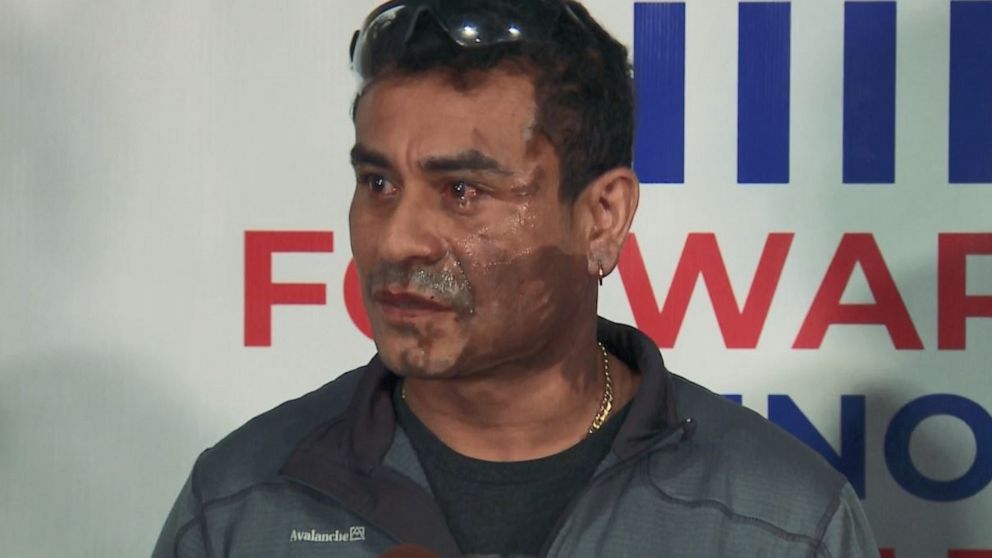
A Milwaukee man faces a felony hate-crime charge for an alleged acid attack on a man who says he was targeted for his Latino identity and left with second-degree burns. Clifton Blackwell, 61, has been charged with first-degree reckless injury in a hate crime using a dangerous weapon. Reckless injury carries up to 25 years in prison and $100,000 in fines. Prosecutors are pursuing hate crime and dangerous weapon enhancements charges which means Blackwell could face stiffer penalties, including up to 10 more years’ imprisonment.
At a news conference the day after the assault, Mahud Villalaz, 42, said he parked his truck outside a restaurant at 8:30 p.m. and began to walk toward it to have dinner when a man at a nearby bus stop approached him and chastised him for parking in a bus lane. Villalaz said, the man asked why he’d “invaded” the United States and said “Why don’t you respect my laws?”
Realizing he was parked too close to a bus stop, Villalaz moved his truck to another spot and headed toward the restaurant. Blackwell re-engaged him saying “Why did you invade my country?” calling Villalaz an “illegal” and cursing at him while telling him to “go back.” He told Blackwell that “everyone comes from somewhere first” and pointed out that “American Indians have been in the country the longest,” court filings state. Villalaz said that’s when Blackwell got angry and tossed the acid, which was in a small silver bottle, in his face. The attack was caught on surveillance video.
Villalaz was taken to the hospital with second-degree burns to his face, cheek and neck, as well as damage to his clothing, according to police. Testing showed that acid caused the injuries. The attack took place just outside the restaurant doors. Witnesses say Villalaz, a regular at the restaurant, burst through the doors crying with his face searing with acid. The restaurant staff tried everything to wash the acid from his face until paramedics arrived.
Villalaz, who says he grew up in Peru and immigrated to the United States as a young man – became a citizen in 2013. He said he felt relieved charges were filed and thankful at the nationwide support he’s gotten. “It’s been nice to know that there are many people here that worry about other people. Not only Latinos … people of all colors. We must unite,” Villalaz said.
During a search of Blackwell’s home, police found hydrochloric acid, four bottles of sulfuric acid and two bottles of drain opener made of lye, according to court documents. Blackwell’s bond has been set at $20,000 on the condition that he wears an electronic monitoring device. He is also forbidden from contact with acids or large batteries. Court records indicate Blackwell has previously been convicted of false imprisonment and pointing a gun at a person.
According to the criminal complaint, on Nov. 19 2006, Blackwell confronted four men, two with rifles, who had come onto his farm tracking deer in the Town of Lawrence. Blackwell pointed a loaded rifle at the men and told them to disarm, then marched them back to his house where he photographed their faces and hunting tags. He told them they were guilty of criminal trespass and called the sheriff’s office but wound up charged himself. Prosecutors dropped one of each of the charges, and Blackwell pleaded no contest to one count each of pointing a firearm and false imprisonment. He was sentenced to 379 days in jail. Blackwell’s mother said he had served in the Marine Corps during the U.S. invasion of Panama in 1989 and had moved back to Wisconsin for treatment for PTSD type problems. Officials with the Marine Corps Manpower and Reserve Affairs office in Virginia said it could find no record of Blackwell ever serving in the Marines.
Read more













